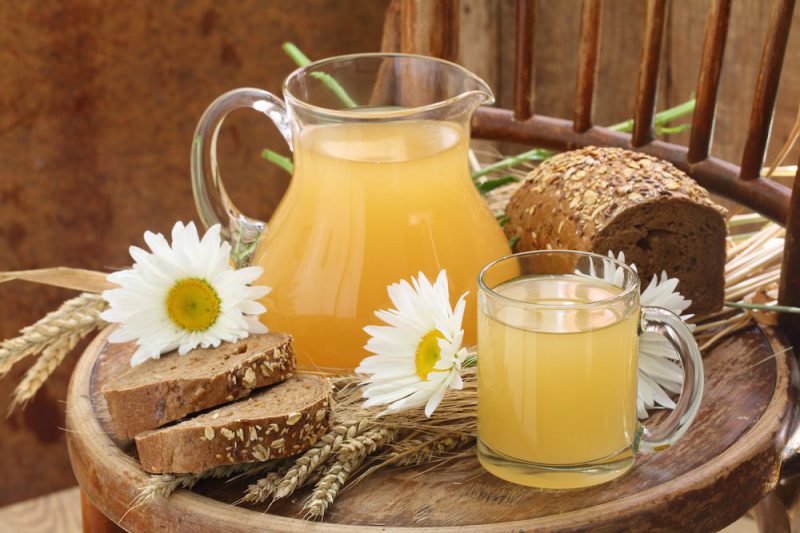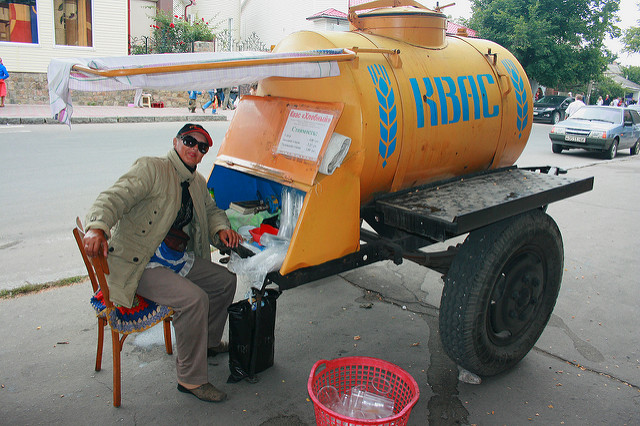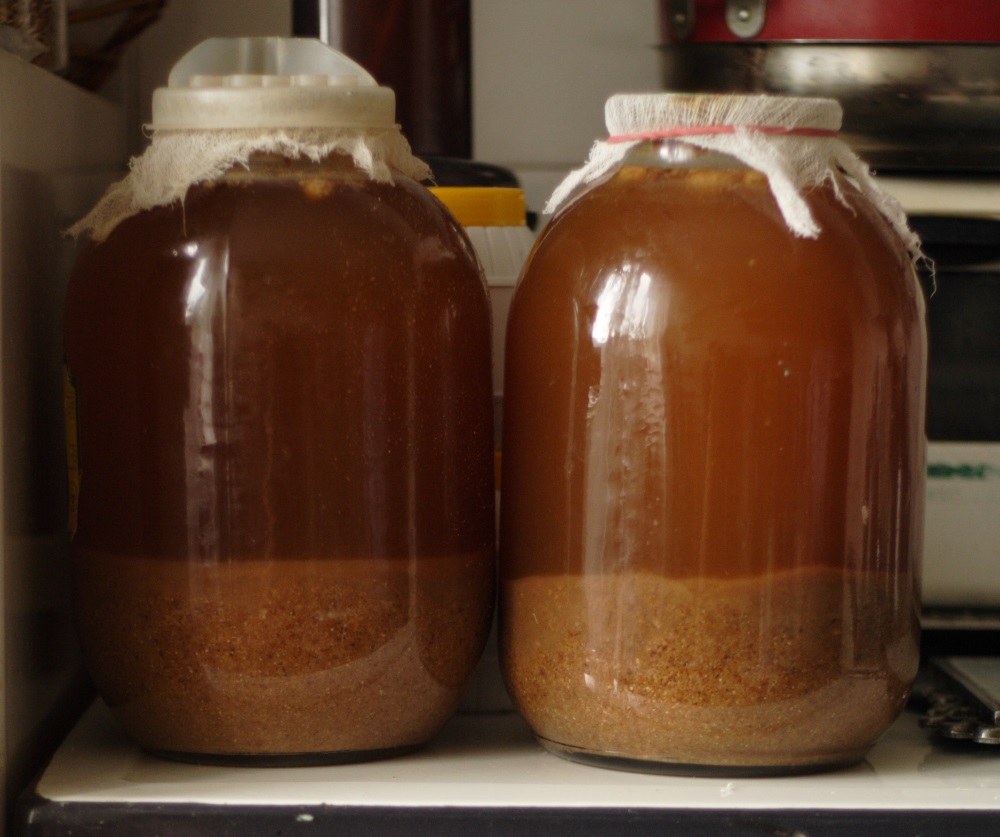Kvass – Traditional Russian drink
Kvass is a traditional Slavic sour drink, which is prepared from the fermentation of flour and malt or from dry rye bread. Today we will tell you about the benefits of kvass, a short history of this wonderful Russian drink, as well as give you a recipe so you cam make it at home.

History of kvass in Russia
In the early Middle Ages the kvass was popular throughout the whole of Europe. But then its place in Europe was outweighed by beer. Meanwhile in Russia, kvass remained very popular.
It was made in homes, monasteries, hospitals and in the army. Many public institutions had their own breweries making kvass. The living, and therefore hasty, kvass was made for sale almost in every village. Foreigners who visited Russia during the last millennium often recalled in their memoirs refreshing kvass, long forgotten by their country.
In Russia, kvass was more often made from bread and grain raw materials like fruit, flour or cereals. But sometimes, to the recipe were added fresh or dry berries and fruits, and even some vegetables, for example, beets.
With the advent of Soviet power, the good traditions of preparing Russian kvass began to be forgotten and replaced with industrial recipes. The quality of such kvass was not always ideal, but it was still an active drink.
In the 1960-1970s kvass started being produced in bottles, and since then it did not really have the right to carry the name “kvass”. That drink was not a product of fermentation, but was made from kvass wort, sugar, lemon and milk acids. All this was mixed and saturated with gas. It was called “blended kvass”, but consumers took it for a real traditional drink.

But the most difficult years for the traditional Russian kvass were the 1990s and almost the first decade of the 21st century, when the kvass practically stopped being produced, and under its name a soda with the taste a-la kvass was sold. Its typical composition was water, sugar or artificial sweeteners, acidulates, dyes and preservatives with some producers adding kvass wort to it. Despite being far from original recipe, it was still sold under the name “kvass”.
Today, some producers are trying to make this natural and healthy active brew again. But still, when buying kvass in stores, you must read the labels to make sure that you are buying a quality drink.
To be sure of the quality of kvass you might want to try to make it at home (you can find the recipe below).
The benefits of the Russian kvass
The traditional Russian kvass is a unique product made of a double fermentation – alcoholic and lactic. In principle, these same processes occur in the production of beer and wine. But to make those, the lactic acid production is slowed down so it produces more alcohol. When making kvass, on the contrary, the process emphasizes lactic acid resulting in very little alcohol being produced.
Kvass still contains a small amount (from 0.7 to 2.6%) of alcohol, depending on the raw materials and recipe. Children before 3 years old are not recommended to drink kvass, besides kvass is not good for people with liver diseases, in particular, cirrhosis, hypertension and gastritis. But all others can considerably benefit from drinking it.
Kvass, by its effects on the body is similar to kefir and cultured active yogurt. The centuries-old experience has shown that kvass contributes to the preservation of health and increases efficiency, prevents the reproduction of harmful and pathogenic microbes and tones the body. These healing properties are due to the presence of lactic acid, vitamins, various sugars and trace elements. Kvass was used against scurvy, it healed wounds, it was used to create a fragrant steam in the baths. Sometimes people simply poured the kvass all over themselves, just “for health”.
Kvass increases appetite. When carrying out heavy work like mowing, plowing, harvesting firewood, the Russian peasants used to take with them not milk but kvass, believing that it relieves fatigue and restores strength. This property of kvass was confirmed by scientists.
How to make quality Russian kvass at home

To make delicious kvass at home for the first time, you should start with the simplest recipes based on rye bread. Another good thing about it is that you can use old bread that became hard and otherwise would be thrown away.
The recipe below is calculated for the 8 liters of water. You don’t have to make so much, you can reduce the amount of each of the ingredients respectively.
Ingredients
To prepare home-made kvass you will need:
- Water: 8 liters
- Fresh yeast: 60 g
- Sugar: 1 glass (200 g)
- Rye bread: 500-700 g
- Raisins: 25 g
Instructions
1. Break the bread into slices and dry it up in a preheated oven until the pieces get a dark crust.
2. Boil the water and switch of the fire.
3. Dilute the yeast in warm water.
3. Add the bread, sugar and yeast into the boiled water. Cover with material and leave aside for two days.
4. Add raisins and leave everything for another day.
5. Filter the water out and put it into the fridge.
Kvass made this way can stay up to 5 days in the fridge. After that it becomes too sour and should not be consumed.
To make a new portion of kvass you don’t have to do everything from scratch. Use a half of the substance that left after filtering the drink out, mix it with a half amount of bread and sugar that you used to prepare this portion, add water and leave to ferment for a couple of days again.
Enjoy! 🙂






